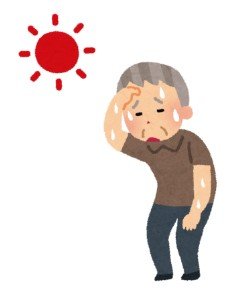Dehydration Prevention
July 2024
With summer here, it’s time to be even more conscientious of our water intake.
Hot or humid climates can cause water loss due to sweating; older adults are also at higher risk of dehydration for a multitude of reasons. Up to 40% of older adults may be chronically underhydrated.
Water helps regulate your temperature, gets rid of wastes, and lubricates your joints. Dehydration means that the body doesn’t have enough fluid to work at its best.
Common Signs of Dehydration
Feeling unquenchable thirst
Few or no tears
Dry, sticky mouth
Not urinating frequently
Dark-colored urine
Unexplained tiredness or fatigue
Feeling dizzy or lightheaded
Confusion
Sunken eyes
Muscle cramping
Preventing Dehydration
Drink Fluids — Drink plenty of water, juice, milk, or teas. Soda and coffee increases effects of dehydration.
Set Reminders - Use an app or smart device to remind yourself to consistently drink throughout the day.
Consider your diet — Try incorporating more fruits and vegetables into your diet. These foods have a high water content than others. Other foods that promote hydration include yogurt, jellies, and low-sodium soup and broth.
Enhance your water — Bored of drinking plain water? Try infusing with fruit or herbs to make it taste better.
Why Are Older Adults at Higher Risk?
Fewer “Water Reserves” - As we age the amount of water in our bodies decreases.
Thirst Response Weakens - Older adults tend not to feel as thirsty.
Kidney Changes - As kidney function changes, you may lose more water during urination.
Many older adults are on medications or have health conditions that affect the way the body processes water.
Things to Remember
Men should drink 13 cups of water a day.
Women should drink 9 cups of water a day.
If you are experiencing symptoms of dehydration, don’t wait for help. Consult your doctor immediately or go directly to the emergency room.



